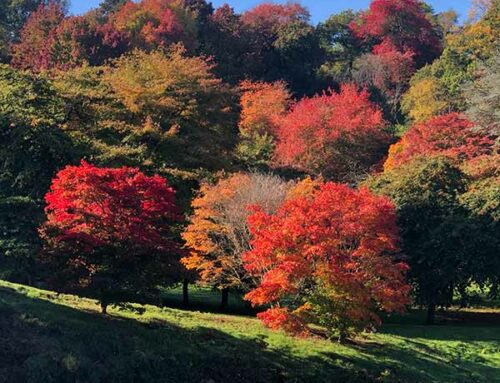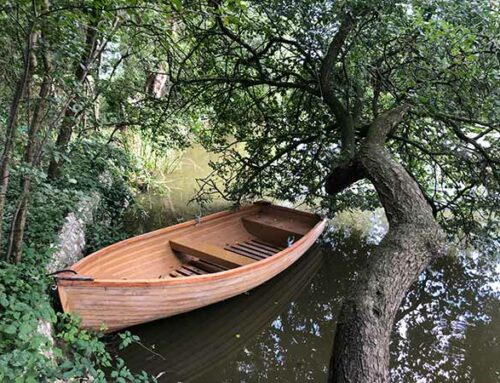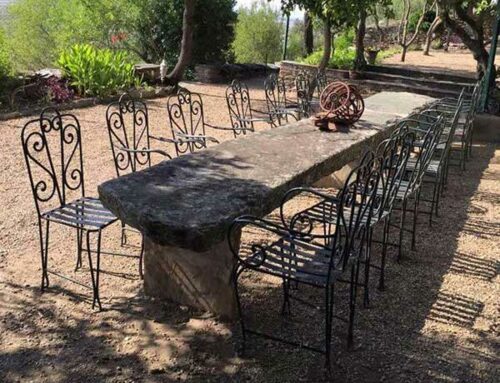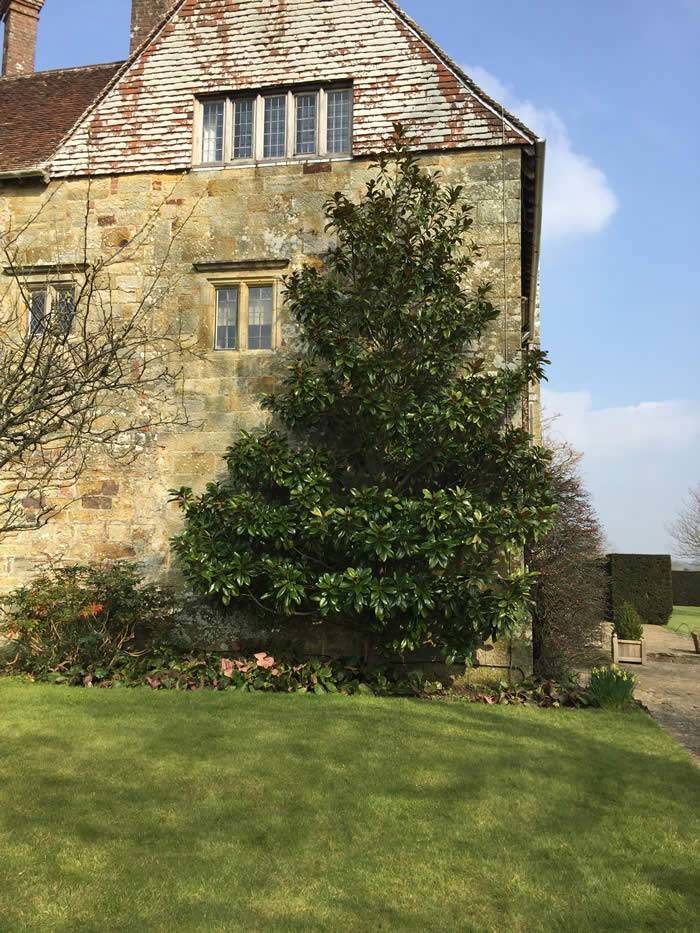
Garden Inspiration Ideas – Evergreen Magnolia Grandiflora
Bateman’s in East Sussex, now owned and managed by the National Trust, is renowned as the much beloved home of Rudyard Kipling. Looking for a secluded family home far from the glare of the public and the media, Kipling purchased Bateman’s in 1902, a 17th century house with walled gardens and surrounded by the wooded landscape of the Sussex Weald.
In 1907, Kipling became the youngest recipient of the Nobel Prize for Literature and he used to prize money (apparently about £7,000 at the time) to have the gardens professionally landscaped.
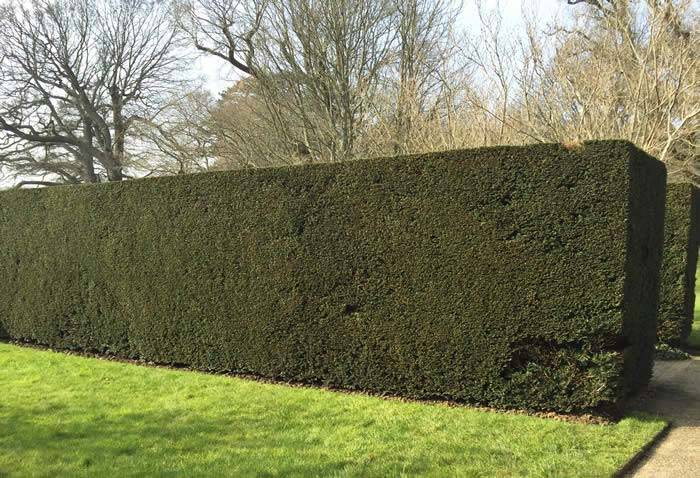
Garden Inspiration Ideas – the Gardens at Bateman’s, East Sussex – Pristine Yew Hedging
What is immediately striking about the gardens at Bateman’s is the strong presence of English heritage trees and plants, including lots of Yew trees, yew hedging and bay trees. The beautiful rich dark green of the yew contrasts beautifully with lighter green of the lawns.
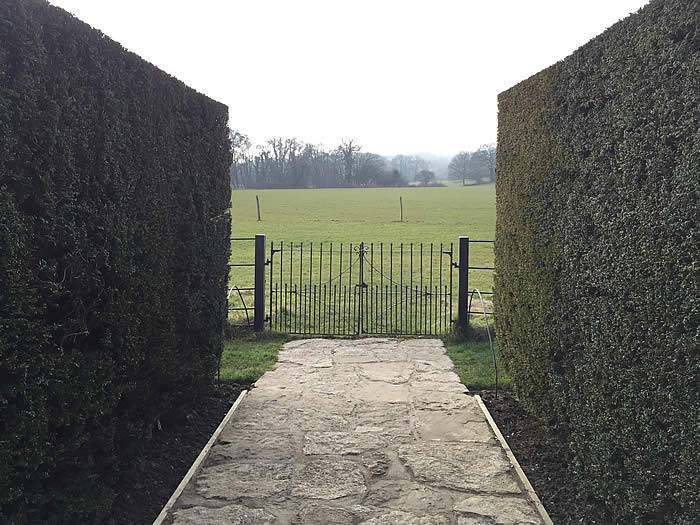
Garden Inspiration Ideas
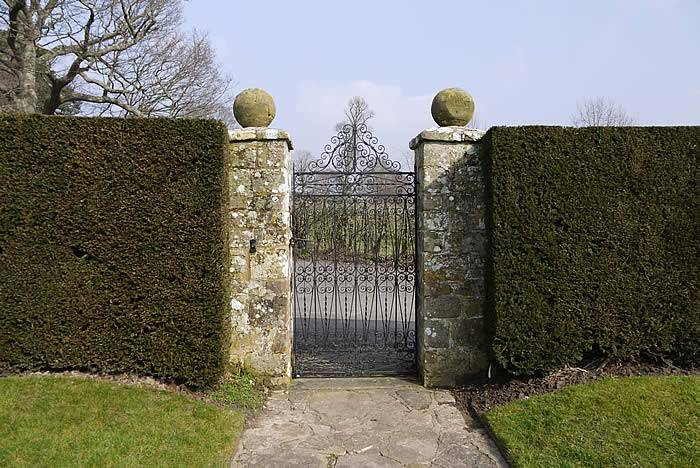
The dark green of the yew enhances the stone work
The working orchard is a mixture of ancient mulberry, apple and pear trees. Along the lovely brick walls are topiary bay trees in the unusual but charming shape of a heart.
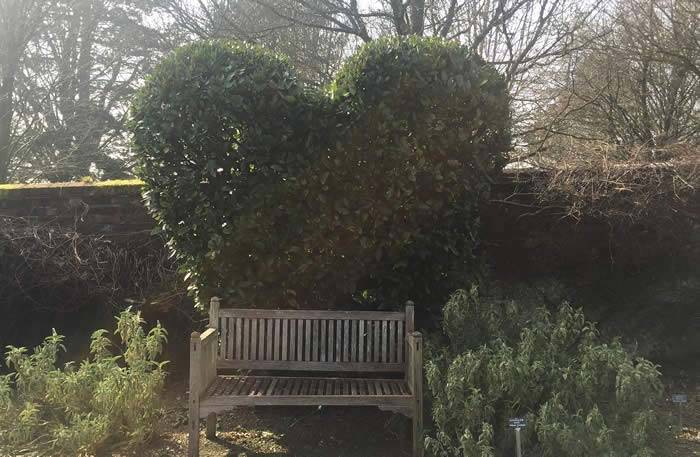
Garden Inspiration Ideas – heart shaped topiary bay trees
To embellish the natural beauty of the house, climbing plants gracefully adorn the exterior walls. A Wisteria Sinensis climbs along one sunny wall and a Hydrangea Petiolaris graces a north facing wall. Evergreen Magnolia Grandiflora frames a corner of the main house.
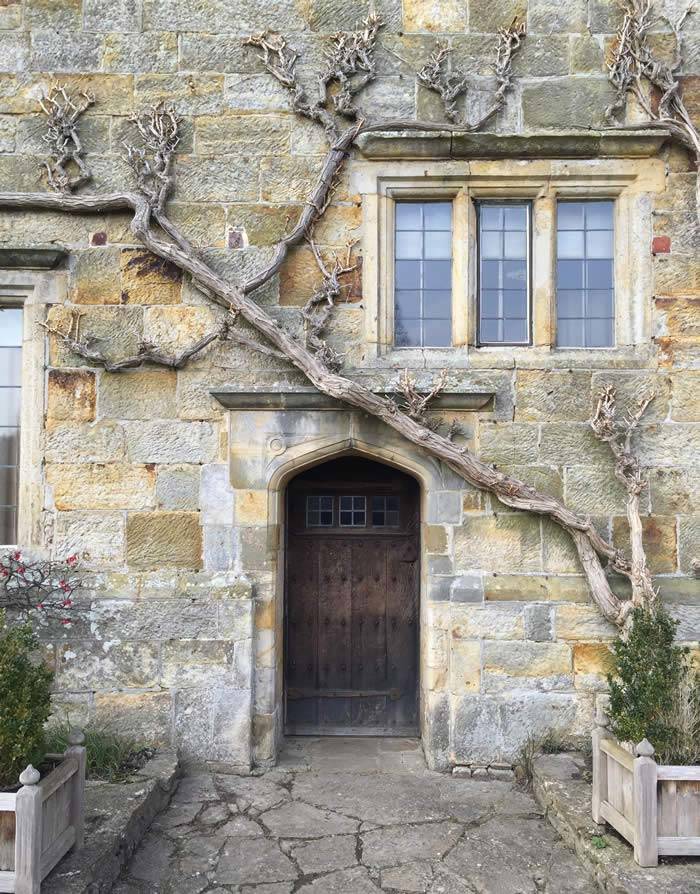
Wisteria Sinensis climbs along one sunny wall
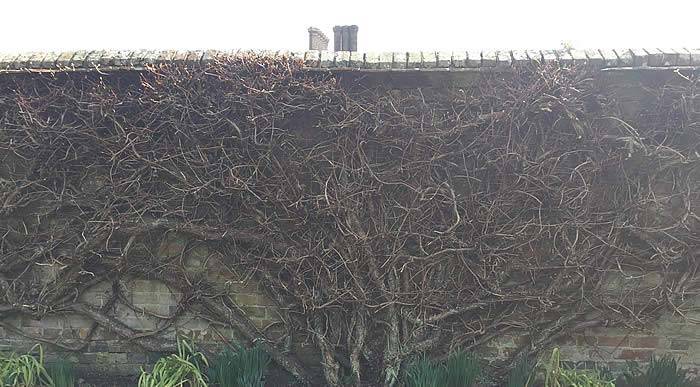
Climbing Hydrangea Petiolaris thrives even on a north facing wall
To the rear of the house sits the beautiful formal garden. Geometrically balanced and beautifully understated, this must have been a summer paradise for the Kipling family. It is not a flamboyant garden but rather a functional space. Kipling wanted it to be very much used – for boating in the shallow lake over the long summer months, playing games on the lawn and even performing amateur dramatics with the children.
The beautifully manicured Yew hedging is a strong feature throughout the garden. Being very famous, Kipling was most keen on privacy and his precious yew hedging kept out prying eyes.
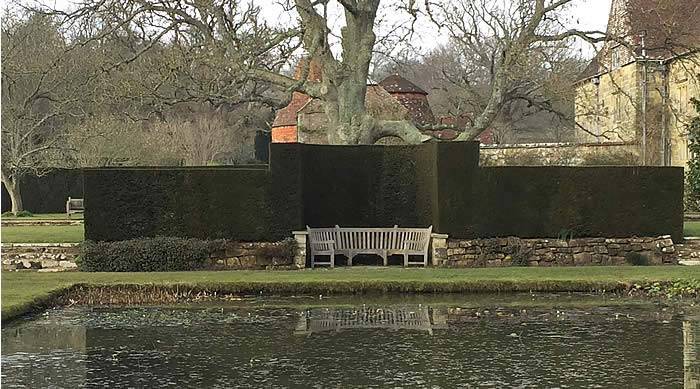
Yew Hedging is a key feature of the formal garden at Bateman’s
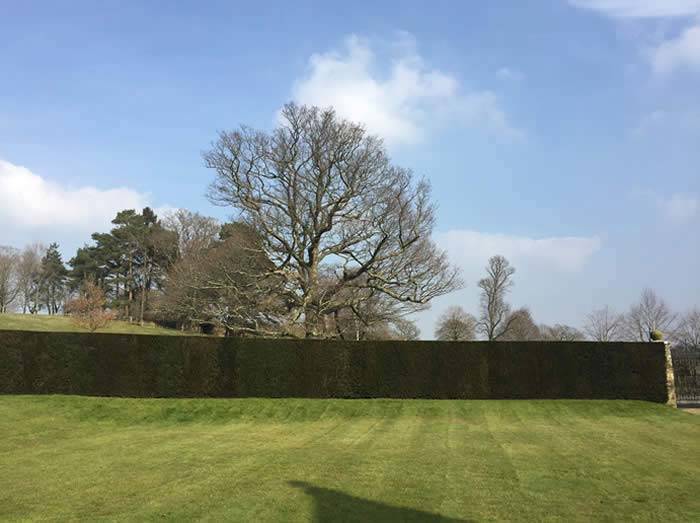
Yew hedging, forming an elegant garden wall
Most magnificent are the two geometrically perfect rows of pleached trees. These are in fact pleached lime trees which were planted over 100 years ago.
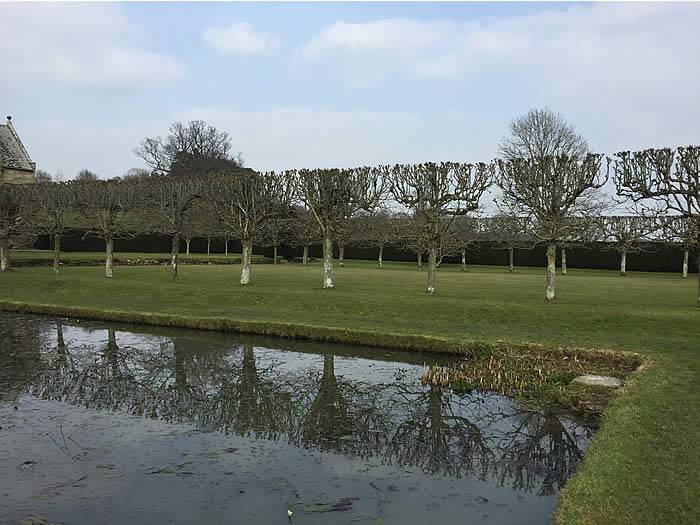
Pleached Trees grace the formal lawn
Behind the formal garden lies the Wild Garden and beyond that again, the watermill, still functioning today. Everywhere you look, you can see rolling hills and woodlands.
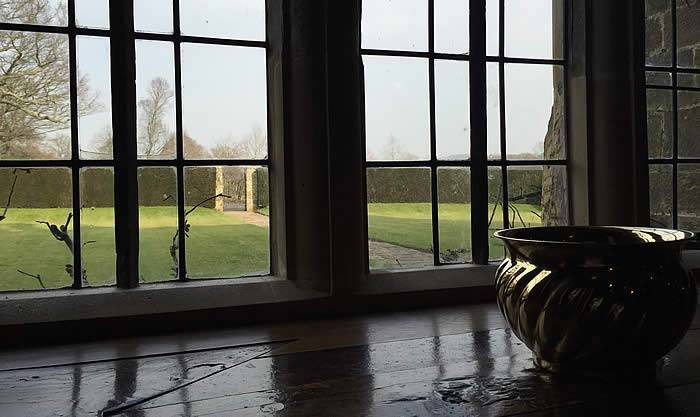
View over the front garden from the house
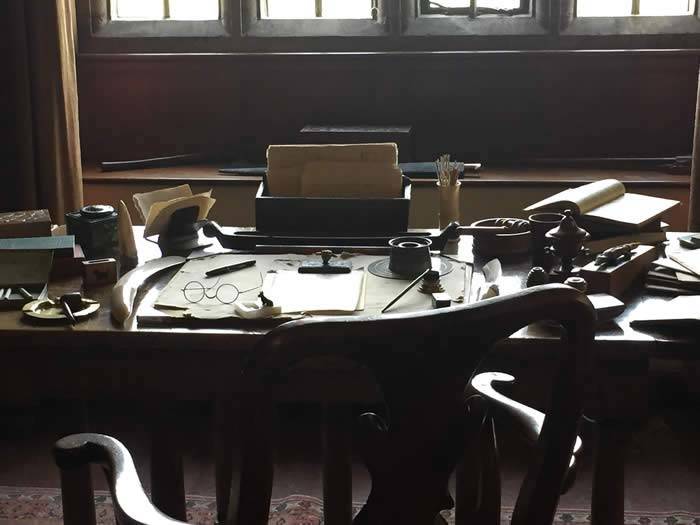
Kipling’s Desk in his study, upstairs at Bateman’s, all left as if he just popped out for a stroll
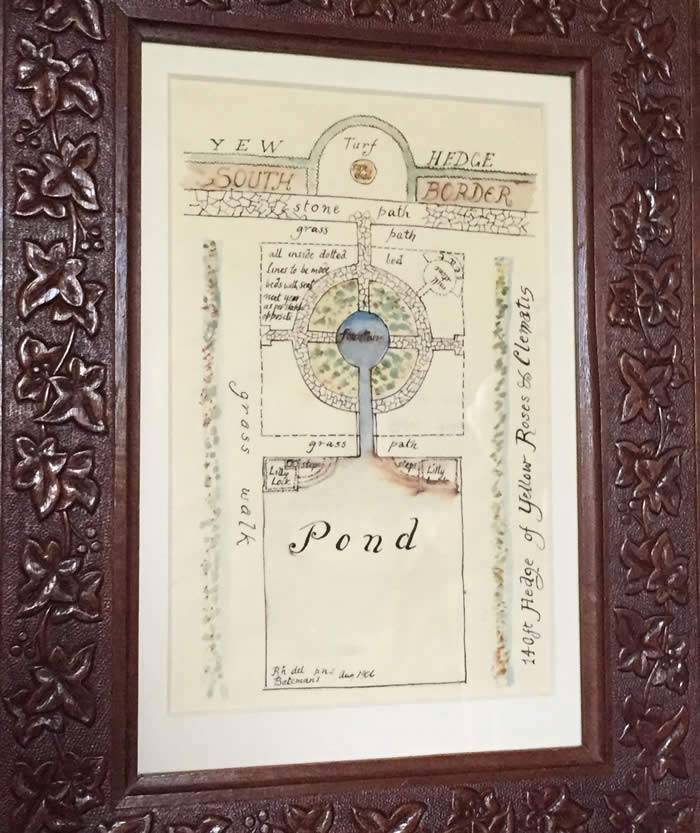
Original Plan of the Formal Gardens constructed after 1907

